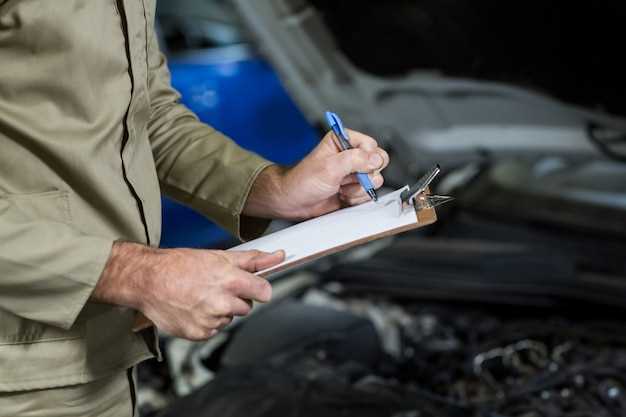
Passing an emissions test is crucial for vehicle owners who want to ensure their cars meet environmental regulations. This assessment evaluates the amount of harmful pollutants your vehicle emits into the atmosphere. Understanding the process and preparing accordingly can significantly increase your chances of success.
To start, it’s essential to familiarize yourself with the specific emissions standards in your state, as these can vary widely. Knowing what is expected will help you determine if any immediate maintenance is necessary before the test. By addressing issues such as a malfunctioning check engine light or worn-out components, you can improve your vehicle’s performance and lower emissions.
Additionally, routine vehicle maintenance plays a significant role in passing the emissions test. Regular oil changes, air filter replacements, and proper tire inflation can enhance fuel efficiency and reduce harmful emissions. Taking these proactive steps will not only help you pass the test but also contribute to a healthier environment.
In this article, we will outline practical steps to prepare your vehicle for an emissions test, ensuring you pass with flying colors and keep your vehicle compliant with regulations.
Preparing Your Vehicle for the Emissions Inspection

To ensure your vehicle can pass the emissions inspection, it is essential to prepare properly. Start by checking the engine light; if it is illuminated, address the issue before the test. Many emissions failures stem from problems that can be identified with a diagnostic scan tool.
Next, inspect your vehicle’s exhaust system for leaks. Any leak can affect emissions levels and lead to a failed inspection. Pay particular attention to the exhaust manifold, pipes, and catalytic converter.
Regular maintenance also plays a crucial role. Change the engine oil, air filters, and fuel filters as needed to optimize performance. A well-maintained engine operates more efficiently and produces lower emissions.
Lastly, consider driving your vehicle for an extended period prior to the inspection. This “pre-test” driving helps ensure that the engine reaches optimal operating temperature, which can enhance emissions results. Following these steps will significantly increase your chances to pass the emissions test successfully.
Understanding Common Emissions Test Failures

Passing an emissions test is essential for vehicle owners, as it ensures that the vehicle complies with environmental regulations. However, many vehicles fail these tests due to various common issues. Understanding these failures can help you take the necessary steps to pass.
One frequent cause of emissions test failures is the malfunction of the oxygen sensors. These sensors monitor the level of oxygen in the exhaust and help the engine control unit optimize fuel efficiency. If they fail, the vehicle may run rich or lean, leading to increased emissions.
Another common reason for failure is a faulty catalytic converter. This component is critical for reducing harmful emissions from the exhaust system. When it becomes damaged or clogged, it can no longer effectively convert pollutants, resulting in a failed test.
Additionally, issues with the vehicle’s fuel system can lead to emissions problems. For instance, a malfunctioning fuel injector may cause an improper fuel-air mixture, increasing the levels of pollutants released into the atmosphere. Regular maintenance, such as changing fuel filters and checking injectors, can help prevent this issue.
Lastly, expired or faulty engine control unit (ECU) software can also result in emissions test failures. The ECU manages the engine’s performance, and outdated software might not effectively regulate emissions. Keeping your vehicle’s software updated is crucial for passing the test.
In summary, a better understanding of these common emissions test failures can assist vehicle owners in addressing issues proactively. Regular maintenance and timely repairs will significantly increase the likelihood of passing emissions tests.
What to Expect on Test Day and How to Handle Issues
On the day of your emissions test, arrive early to allow time for any unexpected delays. Bring necessary documents, such as your vehicle registration and proof of insurance. The testing facility may have specific requirements, so it’s best to check in advance.
Once you arrive, a technician will explain the emissions testing procedure. Your vehicle will undergo a series of evaluations that may include an exhaust gas analysis and a visual inspection of the emission control systems. Be prepared to remain in the waiting area while the test is conducted.
If your vehicle fails the emissions test, don’t panic. The technician will provide you with a report detailing the reasons for the failure. This information is crucial for understanding what repairs are needed to bring your vehicle into compliance.
Addressing any issues promptly can help ensure your vehicle passes a retest. Common problems include faulty catalytic converters, oxygen sensors, or issues with the engine’s computer system. Getting a qualified mechanic to perform the necessary repairs is important.
If your vehicle fails due to minor issues, you may have the option for a partial waiver, depending on local regulations. Make sure to inquire about this possibility if you face challenges in making timely repairs.
In summary, during the emissions test, be prepared, stay calm if issues arise, and take immediate action to resolve any problems affecting your vehicle’s performance. This proactive approach will help increase your chances of successfully passing the test.




